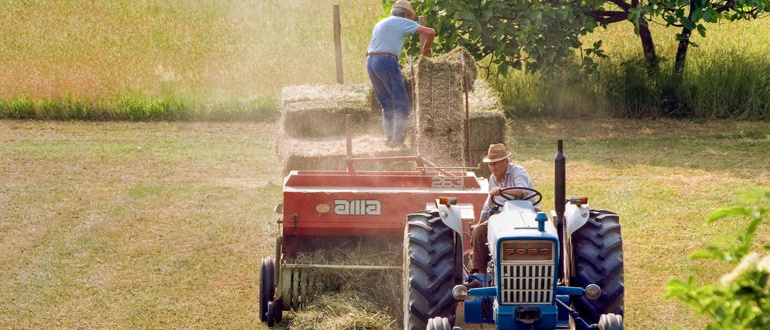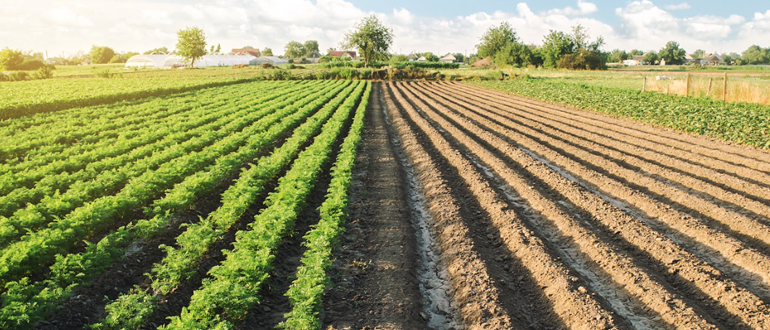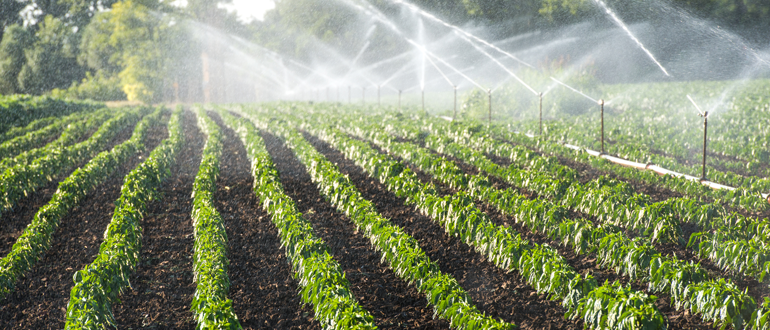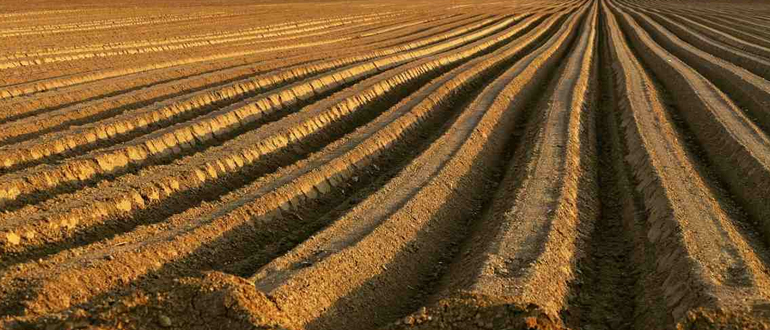
So, you’ve bought the land and decided to start a farming business. Crops grow just fine on their own, making your work as easy as harvesting produce and waiting for the profits to roll in, right? Wrong! It takes a village to let a farm flourish, with many behind-the-scenes preparations in place.
Don’t miss these essential first steps on how to start a farm and successfully build your new venture. Calling all new farmers—here are the ins and outs of starting a successful farm.
Whether you’re dreaming of lush fields of vegetables, a thriving orchard, or a bustling livestock operation, our step-by-step guide will help you navigate the challenges and reap the rewards of your farming journey.
How to Start a Farm: Tips and Tricks

Developing the Objectives and Goals
Begin by crafting a comprehensive list of goals grounded in realism. Consider factors like available space, financial constraints, and realistic timelines. These objectives will serve as the cornerstone for your farm’s success, guiding your strategies and actions.
Prioritize your goals based on urgency and resource requirements. Some tasks may be time-sensitive, while others hinge on completing prerequisite projects. Remember, farming is a long-term investment, requiring patience and dedication. Take into account the cyclical and seasonal nature of agricultural endeavors.
For instance, if crop season looms, prioritize tasks like breaking down sod before planting. Avoid overwhelming yourself by tackling one project at a time. Attempting multiple tasks may lead to burnout and inefficiency.
Organize your tasks logically, focusing on foundational elements before branching out. For instance, renovating the barn for shelter should precede bringing home livestock.
Create a Financial Plan
Crafting a robust financial plan is the cornerstone of success for any new landowner venturing into farming. By coupling your aspirations with a strategic financial forecast, you pave the way for tangible progress.
- Start by compiling a comprehensive budget covering all anticipated expenses—renovations and staff salaries.
- Next, forecast your projected profits to ensure they outweigh initial investments. Diversify revenue streams by exploring avenues like local markets and partnerships with nearby shops.
- Remember to assess potential risks and allocate a financial buffer for emergencies. A well-thought-out financial roadmap not only safeguards your farm’s sustainability but also maximizes its profitability in the long haul.
Evaluate the Land

- Soil Testing: Examine your soil’s composition—its minerals, organic matter, and airflow. This insight guides crop selection and fertility management.
- Water Sources: Identify safe drinking and irrigation sources. While some properties boast natural wells or springs, others may require infrastructure installation.
- Topography: Assess elevation and drainage to optimize construction for homes, barns, and enclosures.
Understand the Regulations
- Water Rights: Local laws dictate how you can use water for agriculture.
- EPA Compliance: Ensure you follow the rules on land conservation and hazardous waste.
- Easements: Be aware of any public rights to your property.
- Zoning Class: Know the permissions for residential and commercial use.
Prepare the Land

Set Up Infrastructure
Select the Right Crops
- Corn (Maize): Corn flourishes in loamy soil, which balances sand, silt, and clay. This type of soil ensures good drainage, preventing water logging that could harm the roots.
- Wheat: Wheat is versatile and can grow in various soils, but it thrives best in well-drained, loamy soils with moderate moisture. While it needs moisture during early growth stages, too much water can cause fungal diseases.
- Soybeans: These plants prefer well-drained, fertile soils and can adapt to loamy and sandy soils. Consistent moisture, particularly during flowering and pod development, is vital for healthy growth.
- Potatoes: Potatoes grow optimally in loose, well-drained soils rich in organic matter, such as sandy loam. They need consistent moisture but can suffer from diseases like potato blight if the soil becomes too wet.
- Tomatoes: Tomatoes require well-drained, fertile loamy soils. Regular watering is essential, especially during fruit development, to keep the soil consistently moist.
- Carrots: Carrots do best in loose, sandy loam soils that are rich in organic matter and well-draining. Compact or heavy soils can cause the roots to grow misshapen.
Maintain Order & Regularly Review Your Objectives
As a new farmer, detailed bookkeeping is your roadmap to success. Start by keeping all your financial, harvest, livestock, and staff records in a safe and organized place. This will not only help you stay on top of your operations but also provide valuable insights into your farm’s performance.
Use spreadsheets or farm management software to track expenses, revenue, crop yields, and livestock health. Document everything from equipment purchases to crop rotations and veterinary expenses. Periodically set aside time to analyze your data, looking for patterns and trends that correlate with profit losses or gains. Are certain crops or livestock consistently outperforming others? Are there areas where you’re overspending or underutilizing resources?
Based on these insights, annually update and adjust your prioritized goals. You might decide to focus more on high-yielding crops, invest in better irrigation systems, or expand your livestock operation. By regularly reassessing your goals and adapting to changing circumstances, you’ll increase your farm’s efficiency and profitability over time.
Market Your Products
Before you start farming, understanding your potential buyers is crucial. Identify your target audience—local consumers, restaurants, or markets—and tailor your products and marketing strategies accordingly. Choose your sales channels, whether direct-to-consumer or through partnerships with local businesses and plan your logistics efficiently.
Develop a clear marketing plan addressing key elements such as logo design, advertising avenues, and potential partnerships. Leverage social media and online platforms to showcase your farm, engaging customers by highlighting your unique selling proposition (USP).
Monitor feedback and market trends regularly, adjusting your strategies to build a strong brand presence. If marketing isn’t your strength, consider hiring a specialist to assist with branding and promotional efforts. Our team offers extensive resources to help farmers like you succeed.
Become Part of an Encouraging and Uplifting Network
Whether this is your first farm or you’re a seasoned ranch hand, there’s always something new to learn. From discovering cost-effective and efficient irrigation systems to mastering the art of sustainable farming practices, having a reliable source of information is invaluable. That’s where the LandLeader network comes in.
By joining LandLeader, you tap into a wealth of resources and support tailored to every aspect of farm life. Have questions about long-term planning? Need tips for streamlining seasonal tasks? Curious about trying new products and processes? LandLeader is your go-to guide. Plus, our STEWARDSHIP magazine delivers expert insights, practical advice, and inspiring stories from farmers and landowners across the country.
Access Farming Expertise on LandLeader
Starting a farm is an intricate process that requires detailed planning, unwavering dedication, and access to the right resources. LandLeader, the premier land marketing platform, is designed to support new and seasoned farmers alike. By partnering with LandLeader, you can access a vast network of agricultural professionals, valuable insights, and top-notch marketing tools to help you succeed.
From finding the perfect piece of land to selling your farm products, LandLeader offers comprehensive solutions tailored to the unique needs of farmers.